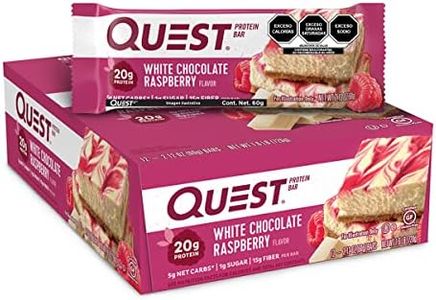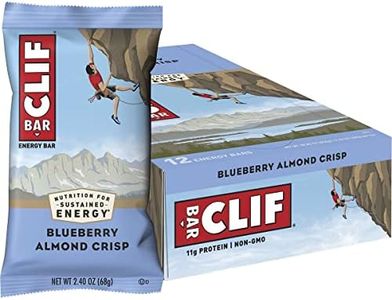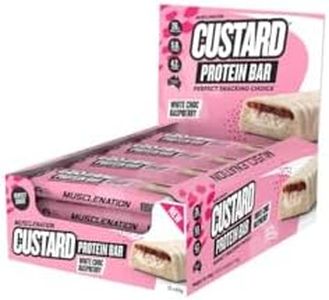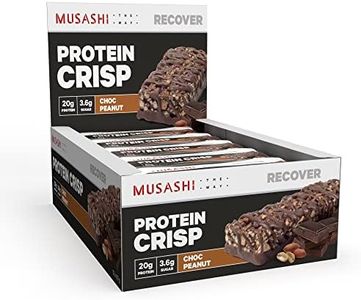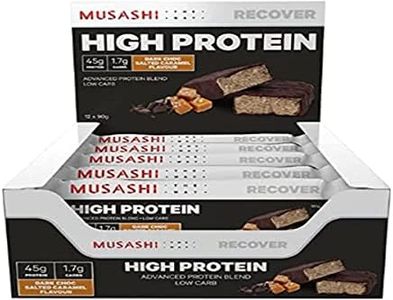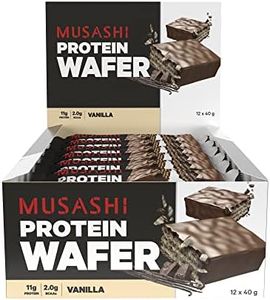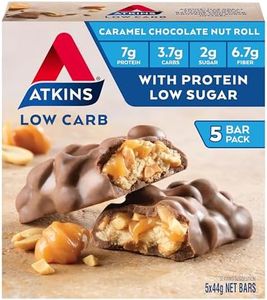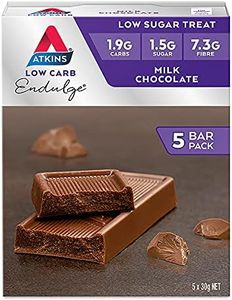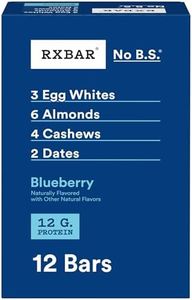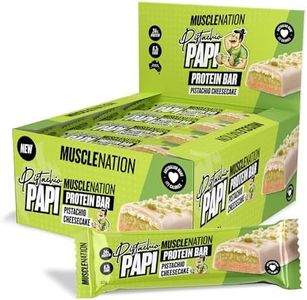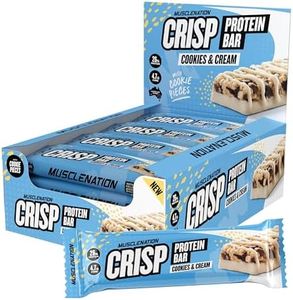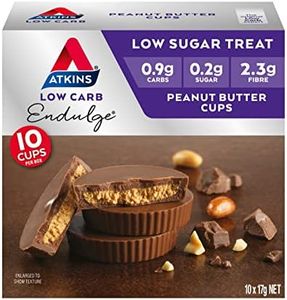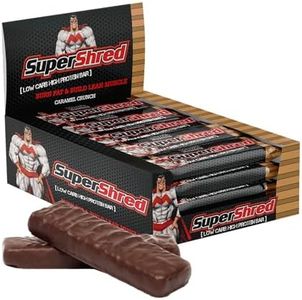We Use CookiesWe use cookies to enhance the security, performance,
functionality and for analytical and promotional activities. By continuing to browse this site you
are agreeing to our privacy policy
10 Best High Protein Snacks
From leading brands and best sellers available on the web.Buying Guide for the Best High Protein Snacks
Picking the right high-protein snack is about finding something that fits your lifestyle, taste preferences, and health goals. High-protein snacks are a useful way to boost your daily protein intake, help with muscle repair and growth, or keep you feeling full between meals. To choose the best fit, you’ll want to think about your activity level, dietary needs, and how and when you plan to eat your snack. Reading the nutrition label, understanding protein sources, and considering other ingredients can help you sort through the many options available.Protein Content per ServingProtein content per serving tells you how much protein you get in one portion of the snack. This is important because protein helps with muscle repair, growth, and satiety. High-protein snacks often range from 5 grams to over 20 grams per serving. Lower ranges (5–10g) suit those wanting a small boost, perhaps for light snacking or between meals. Moderate ranges (10–15g) are common for balanced snacking and might be ideal for most people. Higher content (15g and up) is best for those who are very active, looking to build muscle, or who have higher protein requirements. Your ideal amount depends on your overall diet and daily needs—choose a range that complements your daily intake and activity level.
Source of ProteinThe source of protein in your snack can be animal-based (like dairy, meat, or eggs) or plant-based (like nuts, seeds, soy, or legumes). This is important for dietary preferences, potential allergies, and digestibility. Animal-based sources provide complete proteins and are great for those without dietary restrictions, whereas plant-based sources suit vegetarians, vegans, or anyone who is looking for more variety. If you have allergies or specific dietary needs, check the source carefully and select the type best fitting to your lifestyle and beliefs.
Sugar and SweetenersThe sugar and sweetener content tells you how much added or natural sugar is included. A lower sugar content is generally healthier, especially if you're watching your overall calorie or carbohydrate intake. High-protein snacks can have no added sugar, artificial sweeteners, or natural sugars from fruit or honey. No added sugars or naturally low-sugar options are suited for health-conscious users, while moderate levels may be fine for athletes needing quick energy. Always check the label to see what type and amount of sugar you are comfortable with.
Calorie ContentCalorie content shows how much energy the snack provides in each serving. This spec is important if you’re trying to manage your total daily energy intake. High-protein snacks can range from 80 to over 300 calories per serving. Lower-calorie options are good for light snacking or weight management, while higher-calorie choices may suit those with greater energy needs such as athletes or those looking to gain weight. Think about how the snack fits into your daily meals and pick a calorie level that matches your goals.
Other Ingredients and AdditivesIngredients and additives refer to everything in the snack aside from the main protein source, like preservatives, artificial flavors, and fibers. This is important for health, taste, and allergy concerns. Snacks with simple, whole-food ingredients are generally better if you want a cleaner label and minimal processing. More processed snacks with additives might have longer shelf lives or enhanced flavors, but may not suit everyone. Evaluate the ingredient list to ensure it aligns with your preferences and dietary restrictions.
Portability and ConveniencePortability and convenience indicate how easy it is to take the snack with you or eat it quickly. This is important for busy people, travelers, or anyone who needs a snack on the go. Snacks that are individually packaged or don’t require refrigeration are ideal for these situations. Conversely, bulk or perishable options might be better for those eating at home. Choose a form that matches where and when you’ll be enjoying your snack.
